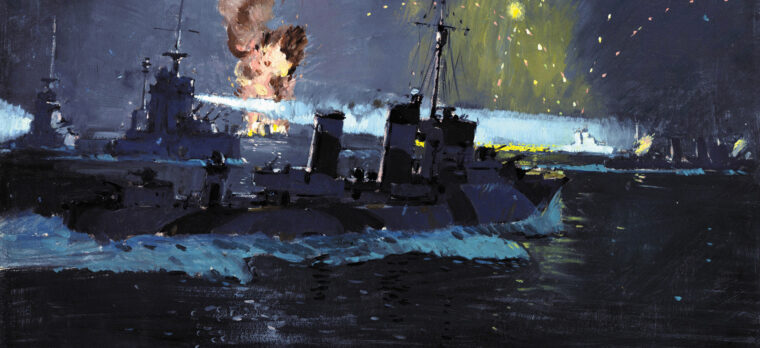
Hannibal and the Second Punic War
By Jonas L. Goldstein, LCDR, USN (Ret.)The Carthaginian hero Hannibal Barca has long been considered to have possessed one of history’s greatest military minds. Read more

The Carthaginian hero Hannibal Barca has long been considered to have possessed one of history’s greatest military minds. Read more

Oddly, the fall of the brilliant King Gustavus Adolphus on the field of battle marked both the beginning of Sweden’s rise to power and the end of one of the most aggressive ages of military reform. Read more

On February 28, 1942, Governor Ralph Lawrence Carr of Colorado received a telegram from the White House. At that moment he was in his office, surrounded by staff, but routine business had to be put on hold while Carr quickly scanned the missive that came directly from the president of the United States, Franklin Roosevelt. Read more

After the long journey from Germany to Istanbul, their escape to North Africa and finally to England, the two defectors ended up in an apartment in South Kensington, one of the more wealthy neighborhoods of London. Read more

Robert the Bruce, self-proclaimed King of the Scots, grasped his axe as the heavily armored English nobleman, a member of the vanguard of the 20,000-strong English army, bore down upon him, lance leveled and clods of earth arching from his charger’s hoofs. Read more

For much of its history, artillery has been a weapon of mass destruction and attrition, a force designed to cause casualties, destroy fortifications, and wear an enemy down with its noise, explosions, and shrapnel. Read more

It was called “rodding,” and it was a complex manual procedure used by British cryptographers at Hut Eight in the Government Code and Cipher School at Bletchley Park to decipher Italian Naval Enigma coded messages. Read more

A host of famous fighters and bombers in the Allied arsenal spearheaded the aerial offensives that helped secure victory against the Axis powers in World War II. Read more

Most Indian battles were small affairs, often company-sized engagements. Many were fought between equally numbered forces, or if disproportional, the U.S. Read more

And here we have the Sam Browne belt assembly,” explained the sergeant who was showing us around the Police Academy. Read more

When word reached 21-year-old Private Bradford “Brad” Freeman in Mourmelon-le-Grand, France, that the entire 101st Airborne Division was being put on 24-hour alert for movement to the front, he was neither surprised nor shocked. Read more

One of the best known and most effective champions of the Allied cause in World War II was a dour, slightly built Iowa native wearing rimless glasses who never fired a shot in anger and collected no ribbons for gallantry. Read more

Western Anatolia in the 13th century bc was the main arena for a protracted trial of strength between two vital and aggressive empires, Hatti and Ahhiyawa. Read more

War correspondents are relatively new to history. The Crimean War (1854-1856), pitting Great Britain, France, Turkey, and Sardinia against Russia, was the first conflict in which an organized effort was made for civilian correspondents reporting news directly to the civilian population of the home country. Read more

“We went to London in ones and twos during our precious 24-hour passes to transfer and pick up our U.S. Read more

Little more than four months after the disastrous attack on Pearl Harbor, America went on the offensive against Japan with one of the boldest and best remembered bomber raids of World War II. Read more

At 11 o’clock on the evening of June 23, 1812, the first elements of Napoleon’s mighty army marched on three pontoon bridges over the river Niemen and set foot on Russian soil; the epic invasion of Russia had begun. Read more

“And the rockets’ red glare, the bombs bursting in air …”
That, as most people know, is a line from the American national anthem, words by Francis Scott Key, to the tune of Anacreon in Heaven by John Stafford Smith. Read more

While the soldiers and officers of the Japanese 15th Army fought fiercely to defend Mandalay in central Burma, they were alarmed to discover that British and Indian troops were dangerously close to attacking their supply depot at Meiktila, 90 miles to their rear. Read more

On paper, the Reising submachine gun appeared to be an ideal close-combat weapon. Accurate, lightweight, and inexpensive to manufacture, it was selected by the U.S. Read more